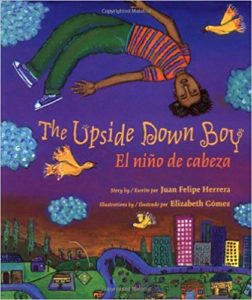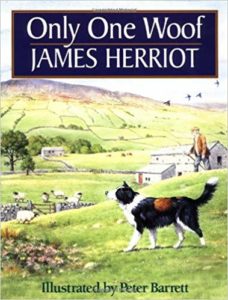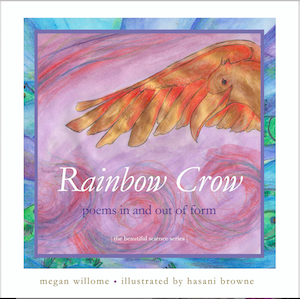While helping my dad move, I had an experience that made me feel like my world turned upside down.
I’d gone looking for good picture books I could snag and found one titled The Upside Down Boy / El Niño de Cabeza, by Juan Felipe Herrera, on a shelf that held the books my mom kept for the grandkids.
But when did she become acquainted with Herrera? In The Joy of Poetry, I wrote about how I thought she would like him:
Why poetry? For kinship. I am a white woman, but there is something in Juan Felipe Herrera’s “Half Mexican” that resonates with me. It’s a poem about identity—the eternal “Who am I” question, which I have not only asked but written about in my horcrux poem. Einstein is in Herrera’s poem, as is Kant, as are pyramids and quarks. I have no experience with any of those things. I still love it.
I also love it because Mom would be thrilled that Herrera was named the first Latin-American U.S. poet laureate. She might not know any of his poetry, but if she were here, she’d be calling me to make sure I knew about his appointment. And if she heard Herrera doing an on-air interview, she might call in for the opportunity to speak Spanish with him.
I opened the book. Inside it, I found a card from me, to my mom, gifting her the book in my hands. I had completely forgotten.
Everything was upside down. I was la niña de cabeza.
But what I felt was nothing compared to what Herrera — called Juanito in the story — feels when his family moves to the mountains by Lake Wolfer, “a glassy world full of sky colors,” so he can attend school. His parents are campesinos, farm workers, moving with the crops.
The move isn’t easy. The English word “recess” sounds like the Spanish word reses, cattle. For lunch, Juanito brings a burrito de papas, a potato burrito, instead of a sandwich.
“Don’t worry, chico,”
Papi says as he walks me to school.
“Everything changes. A new place has new leaves
on the trees and blows fresh air into your body.”
Herrera served as U.S. poet laureate from 2015-2017, and before that, as California’s poet laureate. The line breaks in The Upside Down Boy feel intentional, but it’s not a poem, per se. The illustrations are by Elizabeth Gomez. (You can view Gomez’s color-filled pictures here.)
As Juanito settles in to this new world of school, he explores his creativity.
We are finger-painting.
I make wild suns with my open hands.
Crazy tomato cars and cucumber sombreros—
I write my name with seven chiles.
His parents are proud of him, not only because they see Juanito gaining confidence, but because they know his education will give him opportunities they never had. At bedtime they tell him their story, a story of sacrifice. His mother won a spelling medal in third grade, in El Paso, but had to drop out that year to help her mother. His father paid friends a penny a word so he could learn English.
Papi says softly, “Each word,
each languge has its own magic.”
Juanito’s teacher, Mrs. Sampson, tells him he has a beautiful voice and eventually lets him conduct the school choir. Herrera dedicates the book to his third grade teacher, Mrs. Lucille Sampson of Lowell Elementary School, Logan Heights, San Diego, 1958, “who first inspired me to be a singer of words, and most of all, a believer in my own voice. Gracias.”
Juanito’s voice is most clear when he writes a poem.
Juanito’s Poem
Papi Felipe with a mustache of words.
Mama Lucha with strawberries in her hair.
I see magic salsa in my house and everywhere!
You know what we need? More magic salsa. We need tomato cars and cucumber sombreros. We need upside down kids who grow up to be poets. And we need to be surprised, from time to time, when we find that the thing we were looking for was there all along, on just the right shelf.
_______________
The next Children’s Book Club will meet Friday, February 8. We will read Only One Woof by James Herriot, which is a sort of love story for a dog.
Photo by SirisVisual, Creative Commons, via Flickr. Post by Megan Willome, author of The Joy of Poetry.
Browse more Children’s Book Club
“Megan Willome has captured the essence of crow in this delightful children’s collection. Not only do the poems introduce the reader to the unusual habits and nature of this bird, but also different forms of poetry as well.”
—Michelle Ortega, poet and children’s speech pathologist
- Perspective: The Two, The Only: Calvin and Hobbes - December 16, 2022
- Children’s Book Club: A Very Haunted Christmas - December 9, 2022
- By Heart: ‘The night is darkening round me’ by Emily Brontë - December 2, 2022




L.L. Barkat says
Oh, Megan! What an experience. One of those freeze-you-in-time kind of moments.
This book sounds so lovely, so inspiring.
Megan Willome says
It is inspiring and simply gorgeous, capturing the palette of Mexico.
Sandra Heska King says
Bummed that our library didn’t have this. Nor could I find a reading online. I did, however, find Herrera doing some presentations and readings. He’s pretty good in front of a crowd. 🙂
I’m going to keep looking for it and might have to break down and buy it.
What magic salsa to not only uncover this book but to discover you were its giver.
Megan Willome says
Sandy, I’m still stunned.
I looked on YouTube for a reading to share and came up empty. Herrera does seem to be quite the performer–a good thing for a poet!
Laura Brown says
A gift to your mother, a gift back (and forward?) to yourself.
A penny a word. That’s the part I keep thinking about.
Megan Willome says
The penny a word thing is such a great detail.